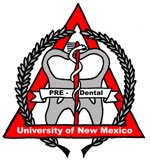
These videos are fantastic! Let me know what you think:) Click on the link below to get the main web page.
http://www.dentalcomfortzone.com/techniques.asp
Root Canal
Dr. Gordon demonstrates root canal on one of his patients and describes his technique.
(Click the title to view)
Air Abrasion
Dr. Gordon demonstrates painless air abrasion and describes his technique.
(Click the title to view)
Cosmetic Dentistry
Dr. Gordon demonstrates a cosmetic dental procedure on one of his patients, and describes his technique.
(Click the title to view)
Crown
Dr. Gordon demonstrates a preparation for a crown and describes his technique.
(Click the title to view)
Extraction
Dr. Gordon demonstrates a dental extraction on two of his patients, and describes his technique.
(Click the title to view)
Denture
Dr. Gordon demonstrates a preparation for a crown and describes his technique.
(Click the title to view)
Root Canal Retreat
Dr. Gordon demonstrates a root canal retreatment on one of his patients, and describes his technique.
(Click the title to view)
Check-up
Dr. Gordon demonstrates a dental examination on one of his patients, and describes his technique.
(Click the title to view)
Dr. Gordon’s clinical videos, recently featured in The New York Times, can be made available for televised news broadcasts and other special interest segments on short notice
The Dental Comfort Zone would like to acknowledge the superior work of Swamp Queen Productions for their video & photography.

